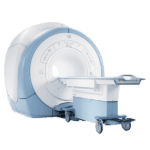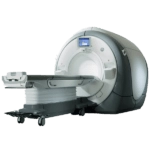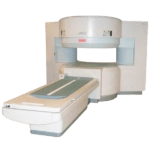70% of women with discordant benign breast biopsy results can be triaged and avoid unnecessary surgery with breast MRI
According to a new study published in the May issue of the American Journal of Radiology, 70% of women with discordant benign breast biopsy results can be triaged and avoid unnecessary surgery with contrast-enhanced breast MRI.
Written by Dr. Linda Sanders of RWJ Barnabas Health in Livingston, NJ & & her team, the group noted: “Use of contrast-enhanced MRI could improve outcome by either showing absence of a clinically significant lesion (thereby avoiding surgical excision) or confirming the presence of an actionable lesion, leading to conclusive diagnosis of malignancy or borderline lesion.”
A key part of the biopsy process is correlating pathologic results with imaging characteristics of the lesion sample. Women will often have to undergo additional invasive procedures such as excisional biopsy if the pathology and radiology results don’t match.
“Concordant benign cases are those in which the biopsied lesions are deemed low suspicion (usually BI-RADS 3 or 4A),” the group wrote. “Follow-up imaging is the usual protocol, at either six or 12 months depending on the specifics of the case. However, if the benign pathologic results do not correspond well with the imaging (or clinical characteristics) of the biopsied lesion (discordant benign), excisional biopsy has been recommended as standard of care.”
Get Started
Request Pricing Today!
We’re here to help! Simply fill out the form to tell us a bit about your project. We’ll contact you to set up a conversation so we can discuss how we can best meet your needs. Thank you for considering us!
Great support & services
Save time and energy
Peace of mind
Risk reduction
The full study included 45 patients with 46 lesions who underwent contrast-enhanced MRI after discordant ultrasound or stereotactic biopsy results between 2012 and 2018, in order to determine whether contrast-enhanced breast MRI could shed light on discordant biopsy results, which would help women avoid unnecessary surgery.
The group noted that 8 of the 46 discordant lesions were malignant, for a rate of 17.3%, an “expected result” for BI-RADS 4 lesions. Of the total 46 lesions, 28 were nonenhancing on MRI, & 4 patients had MRI findings that supported the original core biopsy diagnosis. This means that 31 of the 45 patients involved in the study (68.9%) didn’t need to have surgery.
Adding MRI to the diagnostic protocol on discordant biopsy can greatly reduce the rate at which patients undergo unnecessary surgery, the study found. But the authors want to go even further with their work.
“A more ambitious goal is to change the paradigm in breast intervention of BI-RADS 4 lesions by incorporating MRI into the management algorithm to reduce the frequency of benign biopsies,” Sanders and colleagues concluded.



